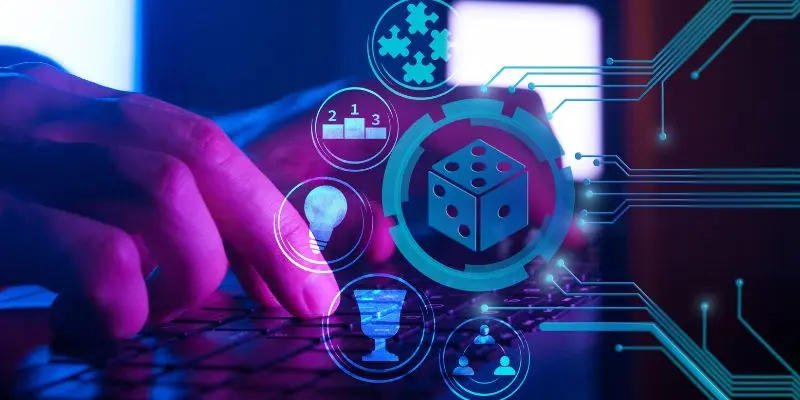
The Benefits of Gamification in Non-Gaming Industries
Gamification, the application of game-design elements in non-gaming contexts, has been gaining traction beyond the world of entertainment. By incorporating elements such as points, badges, leaderboards, and challenges, organizations across various industries are discovering innovative ways to engage, motivate, and achieve their goals. Here, we explore the benefits of gamification in ดาวน์โหลด bk8 industries and how it can drive success.
1. Enhancing Employee Engagement
One of the most significant benefits of gamification is its ability to enhance employee engagement. Traditional methods of motivating employees, such as monetary rewards or annual reviews, often fall short of maintaining enthusiasm. Gamification introduces interactive and competitive elements that can make tasks more enjoyable and fulfilling.
1.1. Increasing Motivation through Challenges
Gamification often involves setting up challenges and goals, which can help employees stay motivated. By earning rewards or recognition for their achievements, employees are more likely to be engaged with their work. For example, a company might create a point system where employees earn points for completing tasks or reaching milestones, with the opportunity to redeem these points for various rewards.
1.2. Fostering Healthy Competition
Leaderboards and competitive elements can foster a sense of healthy competition among employees. When employees see their progress compared to their peers, they may be more motivated to excel. This competitive spirit can lead to increased productivity and a more dynamic work environment.
2. Improving Customer Engagement
Gamification is not limited to internal processes; it also plays a crucial role in enhancing customer engagement. By incorporating game-like elements into customer interactions, businesses can create more compelling and memorable experiences.
2.1. Enhancing Brand Loyalty
Loyalty programs are a classic example of gamification in action. By bk8thaihub customers for repeat purchases or interactions, companies can increase brand loyalty. For instance, a retail brand might offer points for every purchase, which can be redeemed for discounts or exclusive products. This not only encourages repeat business but also strengthens the emotional connection between the customer and the brand.
2.2. Boosting User Interaction
Interactive elements such as quizzes, challenges, and reward systems can make customer interactions more engaging. For example, a fitness app might use gamification to encourage users to meet their exercise goals by awarding badges or unlocking new levels for achieving milestones. This approach can keep users motivated and increase their overall engagement with the app.
3. Enhancing Learning and Training
Gamification has shown remarkable potential in the field of education and professional training. By integrating game elements into learning modules, organizations can create more engaging and effective training programs.
3.1. Increasing Retention and Understanding
Interactive and immersive learning experiences often lead to better retention of information. Gamified training programs, such as those involving simulations or role-playing scenarios, can make learning more engaging and enjoyable. For instance, a company might use a gamified e-learning platform to train employees on new software, incorporating challenges and rewards to reinforce key concepts.
3.2. Providing Immediate Feedback
Gamification allows for real-time feedback, which is crucial for effective learning. Employees or students can receive instant results on their performance, helping them understand their strengths and areas for improvement. This immediate feedback loop can enhance the learning experience and accelerate skill development.
4. Driving Innovation and Problem-Solving
Gamification can also foster innovation and creative problem-solving within organizations. By introducing game-like elements into brainstorming sessions or project management, companies can stimulate creativity and encourage new ideas.
4.1. Encouraging Collaboration
Gamified activities often involve teamwork and collaboration, which can lead to more effective problem-solving. For example, a company might organize a hackathon where teams compete to develop innovative solutions to specific challenges. The competitive and collaborative nature of the event can drive creative thinking and produce valuable insights.
4.2. Rewarding Creativity
Recognizing and rewarding creative contributions can motivate employees to think outside the box. Gamification provides a structured way to reward innovative ideas and solutions, fostering a culture of creativity and continuous improvement. For instance, a company might have a reward system for employees who come up with successful new product ideas or process improvements.
5. Enhancing Customer Service
Gamification can also improve customer service by making interactions more engaging and rewarding for both customers and service representatives.
5.1. Motivating Customer Service Representatives
Gamified elements such as performance-based rewards and recognition can motivate customer service representatives to provide better service. For example, a company might implement a points system where representatives earn rewards based on customer satisfaction scores or the resolution of customer issues. This can lead to improved service quality and higher employee satisfaction.
5.2. Engaging Customers
Interactive and gamified customer service tools can enhance the customer experience. For instance, a company might use a gamified help center where customers can earn rewards for completing certain actions or providing feedback. This approach can make customer support more engaging and encourage greater interaction with the company’s services.
Conclusion
Gamification offers a wide range of benefits across various industries, from enhancing employee and customer engagement to driving innovation and improving learning outcomes. By integrating game-like elements into non-gaming contexts, organizations can create more dynamic and effective experiences that lead to increased motivation, satisfaction, and success. As the use of gamification continues to evolve, its potential to transform industries beyond gaming remains vast and promising.
